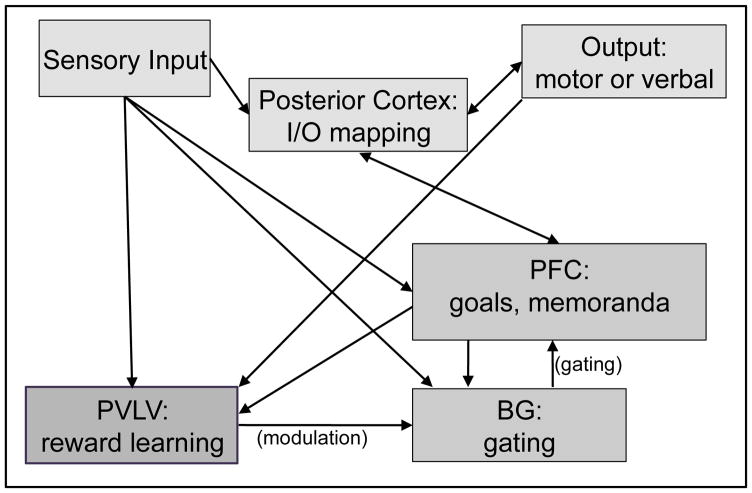Figure 3.
General structure and connectivity of the prefrontal cortex (PFC) basal ganglia (BG) computational model used to simulate executive function (EF) tasks in Herd et al. (2014). Each box represents a layer or set of layers, and arrows indicate connectivity. Layer properties and connectivity incorporate extensive physiological data (Frank et al., 2001). The BG learn whether incoming information (in the sensory input layer) should be gated into the PFC, based on dopaminergic signals representing learned reward values associated with those inputs generated by the primary value–learned value (PVLV) system. If information is deemed relevant, active maintenance currents within PFC are turned on to enable that information’s representation to persist in the absence of input. That information can then be used to bias ongoing processing and select response mappings (learned by the posterior cortex). I/O = input/output.

